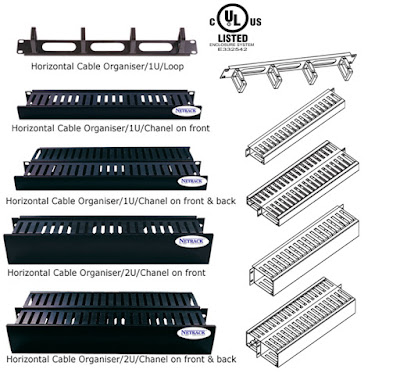Netrack versatile server racks
Data centre
racks or racks of any form and structure are not a new invention, however
the ingenious customization of server
racks, to suite the most minuscule need of servers, their peak performance,
and convenience in using them is a privilege that today’s technology
allows. One of the best server rack manufacturers, we are also a famed name in
the industry for the customization, installation, and optimization of data
centre enclosures and accessories such as fibre raceways, aisle containment and
PDUs,. Our experience in providing turnkey solutions also qualifies us to
provide expert data centre consulting services.
Data centre
racks are considered as great organizational tools for all your servers and
electronics. Racks enable proper airflow so that the internal workings of devices
are not damaged by fluctuations in electricity or temperature, neither hot nor
cold. Racks are used as the means to ensure that wire, cords, and other
external items are not destroyed through tangling or any other form of abuse.
Data racks help maintain your data up to date and enables the preservation and
longevity of expensive technology. However perfect solutions for an
organization where people are constantly in or out, and protect your belongings
from any weather damages, is server rack integration. Racks come structured
with combination locks (matching combinations for back and front and multiple
cabinets). Adjustments are quick and easy. We employ the concept of tool-less
accessories and mounting rails including slots for speedy installation of vertical
cable management and PDUs. Mounting slots are positioned in the
industry-standard pattern compatible with a wide range of accessories. The rail
will accommodate two vertical PDUs or cable managers side-by-side (four in each
enclosure).Top panels have ample cable access vents and can be removed without
any tools in a jiffy without having to disconnect the cables first.
Absolutely nothing is more critical than power, without it nothing works;
it is an expensive, finite scarce resource. The power situation is tracked at
every point in time. At the design stage the power consumption is estimated and
the location of the data centre is estimated by access to the local grid and
cheap power. The design team can also design a substation. Finally when the
data centre is operational power consumption is always monitored to make sure
that consumption is within the threshold also the UPS and generators are all maintained,
serviced and tested regularly. Power is metered and monitored at the rack so
also the power needs. When building a data centre for your own in-house
equipment it is good to utilize virtual technology with small most current
servers with the latest NAS\SAN as well as switches. Hardware is always
becoming more energy efficient; therefore a migration to a new data centre
should always be accompanied by an investment in brand new equipment. Cooling, which absolutely is the second behind
power? Cooling is very critical part of data
centre management. A data centre needs to have double flooring including a
system of hot and cold aisles. Usually, data centres are arranged
in what's called "cold row hot row" layout. In this type of layout,
the racks and machines are placed in rows so that each the next pair of rows
faces each other the cooling is then generated from the HVAC systems into the
cool row, and exhaust is sucked out from the hot row. And for the cooling per
se, typically are very large HVAC systems, where there are multiple chillers
which pump chilled water to the data centre. Generally, datacentres have at
least N+1 capability for cooling, often N+2 or N+3 - meaning that damage of an
HVAC unit doesn't put the datacentre above the level of safe temperature
thresholds. Typically, operations can monitor temperature at several points in
the datacentre and have appropriate alerting.


Comments
Post a Comment